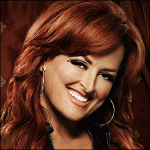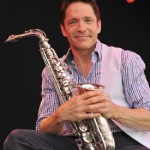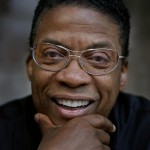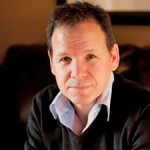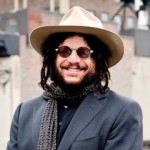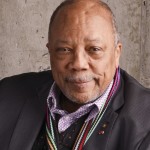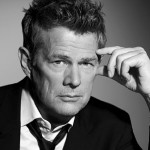The Grammy Award-winning 2000 album features San Diego bassist Nathan East, who says: ‘B.B. was such a great storyteller’
Having already worked separately with B.B. King and Eric Clapton, bass-guitar great Nathan East was understandably delighted to join the two guitar legends in 2000 when they recorded the chart-topping “Riding with the King.” The album, which went on to earn a Grammy Award, is being re-released in expanded form on Friday to commemorate its 20th anniversary.
Yet, while the San Diego-bred East has many vivid memories from those recording sessions, what he most fondly recalls about them is bringing his twin children — then both toddlers — to meet King. The blues giant died in 2015 at the age of 89.
“We went by the studio and B.B. was so excited to meet Noah and Sara,” recalled East, whose many other credits range from George Harrison and Beyoncé to Herbie Hancock and Michael Jackson.
“B.B. put Noah on one of his knees and Sara one the other. I then watched him fold up two bills and make little rings for each of them. When we got home, I looked at the rings and they were $100 bills! After that, every time I’d call him, B.B. would say: ‘How are my twins?’ He was really a sweet man.”
East had first recorded with King in 1991 on the song “Better Not Look Down,” which was featured in the hit movie “Thelma and Louise.” The song was co-written by the late jazz-funk keyboardist Joe Sample, who co-founded the band The Crusaders and played alongside East on “Riding with the King.”
East’s first collaboration with Clapton was on the English guitarist-singer’s 1985 album, “Behind the Sun.” It was the start of a still-vital musical relationship that has seen East perform on numerous albums and world tours with Clapton.
“We would be on tour right now for the entire month of June if it was not for the coronavirus pandemic,” said East, a Crawford High School graduate, speaking from his family’s home in Tarzana. “Touring-wise, everything has been shut down for 2020 and everybody’s consensus is the earliest that touring will resume is 2021.”
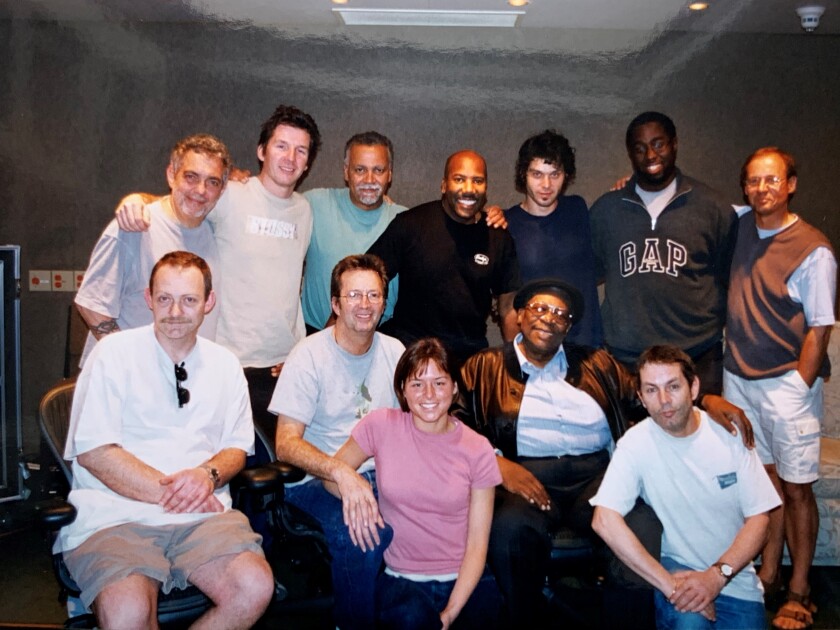
‘B.B. is this genius artist to me’
“Riding with the King” was the first and only joint album that King and Clapton made. The two first met and played together in 1967 at New York’s Cafe Au Go-Go in 1967. Clapton was 22 at the time, King 42.
While they shared concert stages through the decades after that, the only time they recorded prior to “Riding with the King” was on “Rock Me Baby,” a song from King’s all-star 1997 duets album, “Deuces Wild.”
Clapton had long credited King as one of his greatest inspirations, citing the landmark 1965 album “B.B. King Live at the Regal” as “where it all started for me.”
Discussing King in a 2007 Union-Tribune interview, Clapton said: “B.B. is like a father figure and uncle. He’s this genius artist to me. I can’t ever see myself as being in the same league with him.”
East is the sole bassist on the 12-song “Riding with the King,” which features two drummers, two keyboardists, two backing singers and three guest guitarists. East was also the sole musician to spend the week prior to the recording sessions going over the music with King and Clapton, who initiated the album.
The week of recording and the prior week of preparations were both done at Record One in Sherman Oaks. Watching King and Clapton prepare for the album allowed East to closely observe what amounted to a very elite musical fan club between two legends whose friendship dated back to the 1960s.
“The dynamic between them was almost like two guys constantly opening the door for one another,” East said, chuckling at the memory.
“Eric would ask B.B.: What do you think of that?’ And B.B. would say: ‘If you like it, I like it.’ It was a really close mutual admiration they had for each other — both giving the other guy a big, wide, musical lane to function in — extreme reverence.
“There was definitely a feeling of mutual respect between them. And, obviously, they each honored the other one’s ideas. It was kind of funny, because they were so kind and gentle bouncing ideas off each other that it was almost laughable. One of them would say: ‘Well, however you want to do this is good with me.’ And the other would say: ‘Well, however you want to do it is good with me’.”
The results on “Riding with the King” are polished and enjoyable, although King and Clapton sound almost too deferential, although East begs to differ.
“No, it was just the right amount of deference. It was a real nice balance of give-and-take,” he said.
“As a matter of fact, there were a couple of times where Eric would say to B.B.: ‘You take the solo.’ And B.B. would say: ‘No, you take it. You’re better than me!’ It was fun to see. It was also fun just to see B.B. plug his guitar into an amp and — when he hit that one note — that was B.B. King. When you heard that, it was very magical.”
The new 20th anniversary edition of “Riding with the King” adds two previously unreleased numbers to the original 12-song album. The two, “Let Me Love You” and “Rollin’ and Tumblin’,” fit in nicely with the other chestnuts here, which include such King staples as “Three O’Clock Blues” and “Key to the Highway.”
East recalls several other selections being recorded that have yet to come out. After discussing what songs they wanted to record in the week prior to the sessions, King and Clapton worked out the arrangements with East.
“I think there were several that were agreed on in advance, and I remember discussing songs with them that they both liked and wanted to include,” the versatile bassist said.
“So at that point, the week before recording began, we determined what the key and tempo of each songs would be. And we worked out arrangements, not really complex arrangements, to form ideas and determine if you would have a modulation in a song or not, and where. The week was more about getting comfortable in that environment and getting to know how you feel in the studio.”
In addition to East and Sample, the featured musicians on “Riding with the King” include: organist Tim Carmon; drummers Steve Gadd and Jim Keltner; guitarists Doyle Bramhall II, Andy Fairweather Low and Jimmie Vaughan; and, on backing vocals, sisters (and former Prince band members) Wendy and Susannah Melvoin.
East and drummer Gadd are Clapton’s touring rhythm section to this day. Making “Riding with the King” enabled them to watch King and Clapton interact up close. During dinner breaks, they relished hearing King reminisce.
“B.B. was such a great storyteller,” East said. “Sometimes he’d share stories about being on the tour bus, riding through Mississippi in the early days, and stories about gigs — or about women that showed up after the gig! When he talked, it was almost like he was singing.”
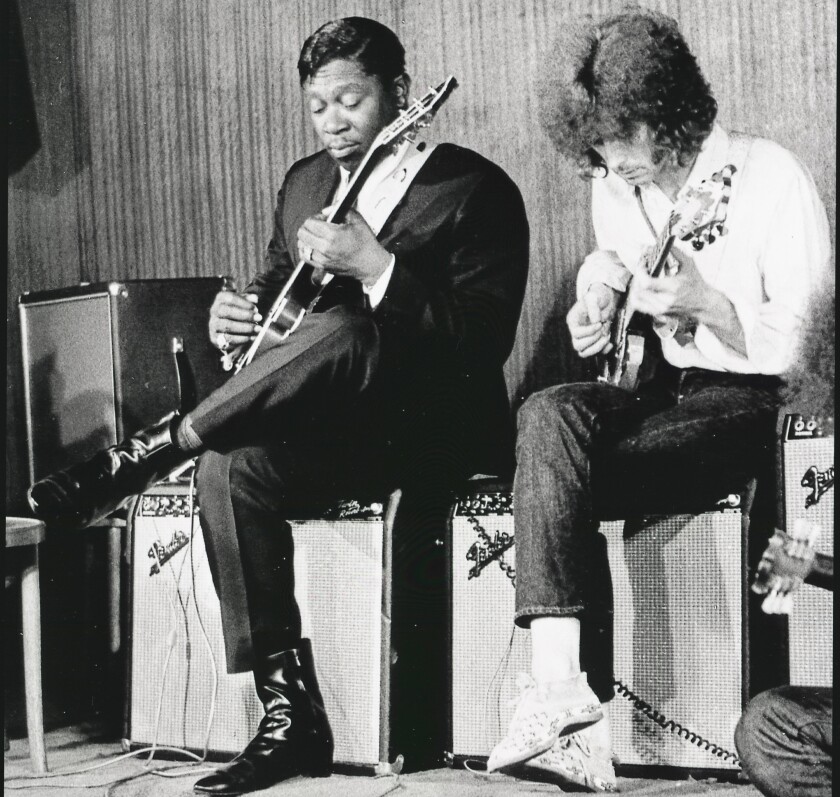
Pastrami and Krispy Kreme
“B.B. used to carry a bag with meat wrapped in white paper,” East recalled with a laugh. “He’d always have pastrami or corned beef with him.”
No bread?
“Just the meat!” East replied. “That was a really old-school feeling to me. He’d be snacking on that meat; he probably didn’t have the healthiest diet. And we used to send out for was Krispy Kreme donuts. There were always a couple of those floating around the studio.”
But the real nourishment came from the music. And East was thrilled to be collaborating with King and Clapton, whose music he had listened to and played while growing up here in the 1960s and ‘70s.
“To hear these two icons in the studio together, at that level, everything they played was gold,” he said. “It was so much fun to watch these guys trade solos and then both sing. It was like being in the middle of blues royalty.
“It’s funny that I played their songs in bands in San Diego in the early days. You never know what’s going to happen.”
East earned his degree in music in 1979 from the University of California San Diego, where he studied with Bertram Turetzky and Cecil Lytle. He moved to Los Angeles that same year and soon became one of the music world’s most versatile and in-demand bassists.
His hundreds of credits include albums with everyone from Aretha Franklin, Daft Punk, Ringo Starr and Joe Satriani to Bob Dylan, Wayne Shorter, Donna Summer and — earlier this month — Post Malone. East is also a co-founder of leading smooth-jazz band Fourplay, which has made more than a dozen albums since its inception in 1991.
King and Clapton never toured together, although East did record on at least one King album after “Riding with the King.”
Asked now to assess the blues pioneer’s artistry, East replied: “B.B. was the consummate professional, who made his way through hard times and was able to establish a band, a legacy and a sound, based on his guitar playing, his singing and a catalog of material that had great impact in our society. He had that iconic sound with his guitar and his voice. But, as a friend, the strongest thing for me about him was his humanity.”
East also cites Clapton’s humanity, singling out the guitarist’s decades of work as the co-founder and primary fundraiser for Crossroads, a nonprofit drug- and alcohol-rehabilitation facility in Antigua.
“What Eric has done helping people to their sobriety will be a big part of his legacy,” East said. “His guitar playing, his voice and his music — like B.B.’s — are pretty much a fabric of our society, around the world.”
The bassist chuckled when asked if he knew the current whereabouts of the $100 bill rings King made and gave to East’s now-grown children 20 years ago, during the “Riding with the King” recording sessions.
“I think,” he said, “my wife is keeping the rings in a drawer.”
